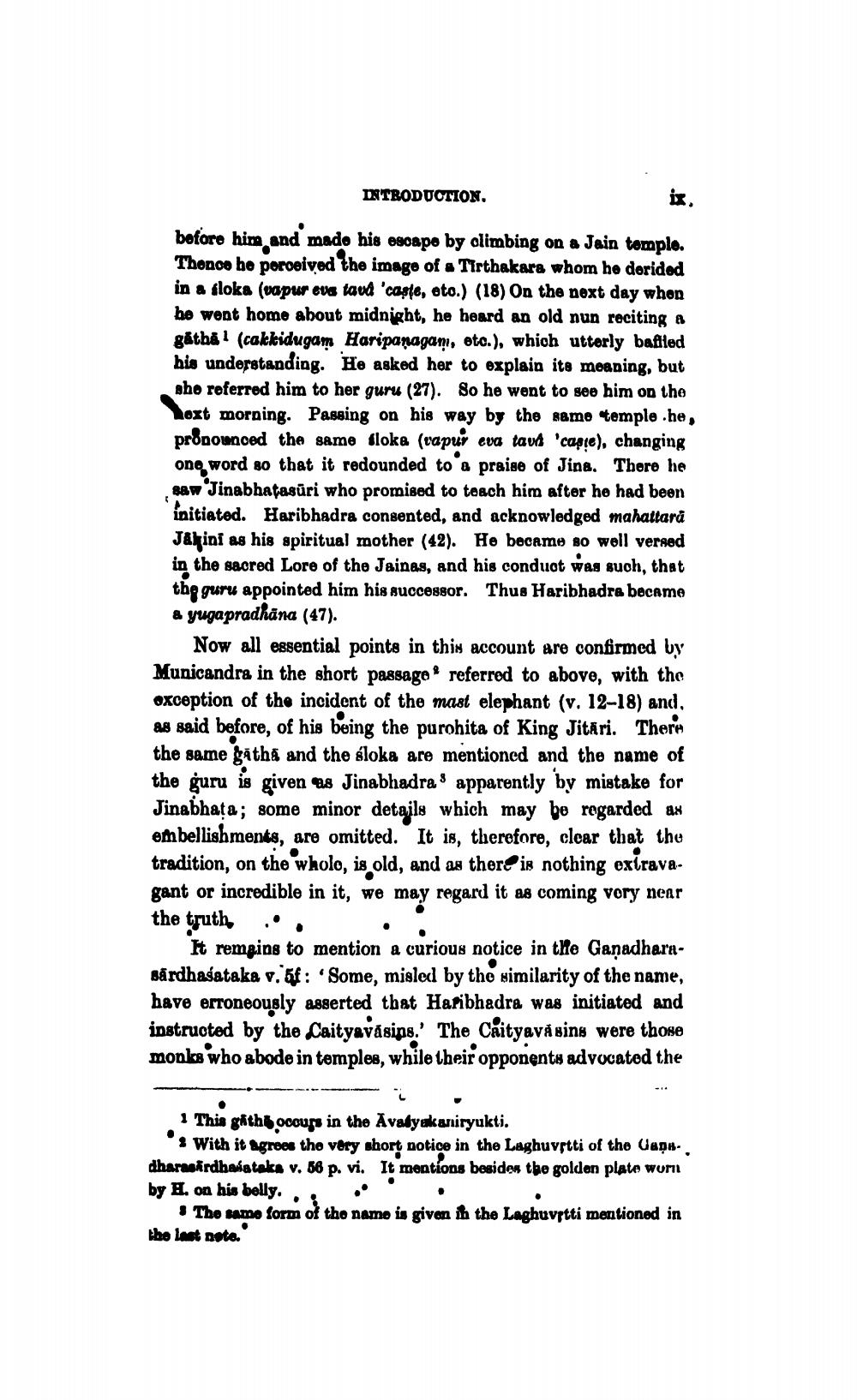________________
INTRODUCTION.
before him and made his egoapo by climbing on a Jain tomple. Thonoo he poroeived the image of a Tirthakars whom he dorided in a floka (vapur eve tavd 'caste, eto.) (18) On the next day whon he went home about midnight, he heard an old nun reciting a gåthål (cakkidugam Haripanagam, etc.), which utterly bafiled his understanding. He asked her to explain ite meaning, but sho referred him to her guru (27). So he went to see him on the Hoxt morning. Passing on his way by the same temple .he, prðnomnced the same floka (vapur eva tava 'capre), changing ono word so that it redounded to a praise of Jina. There he 8&w Jinabhatasūri who promised to teach him after he had been initiated. Haribhadra consented, and acknowledged mahattara Jakini as his spiritual mother (42). He became so well versed in the sacred Lore of the Jainas, and his conduct was such, that the guru appointed him his successor. Thus Haribhadra became a yugapradhana (47).
Now all essential points in this account are confirmed by Municandra in the short passage referred to above, with the exception of the incident of the mast elephant (v. 12-18) and, as said before, of his being the purohita of King Jitari. There the same gatha and the sloka are mentioned and the name of the guru is given as Jinabhadra' apparently by mistake for Jinabhata; some minor details which may be regarded as embellishments, are omitted. It is, therefore, clear that the tradition, on the wholo, is old, and as there is nothing extravagant or incredible in it, we may regard it as coming vory near the truth. . . . .
Ht remains to mention a curious notice in the GanadharaBardhajataka v.5f: 'Some, misled by the similarity of the name, have erroneously asserted that Haribhadra was initiated and instructed by the Caityavásips.' The Caityavá vins were those monks who abode in temples, while their opponents advocated the
· This gåthe occups in the Avalyokaniryukti.
. With it agrees the very short notice in the Laghuvetti of tho apa. dharmsirdhahataka v. 68 p. vi. It mentions besides the golden plate worn by H. on his belly. . . . .
The same form of the name is given th the Laghuvetti mentioned in the last noto.




